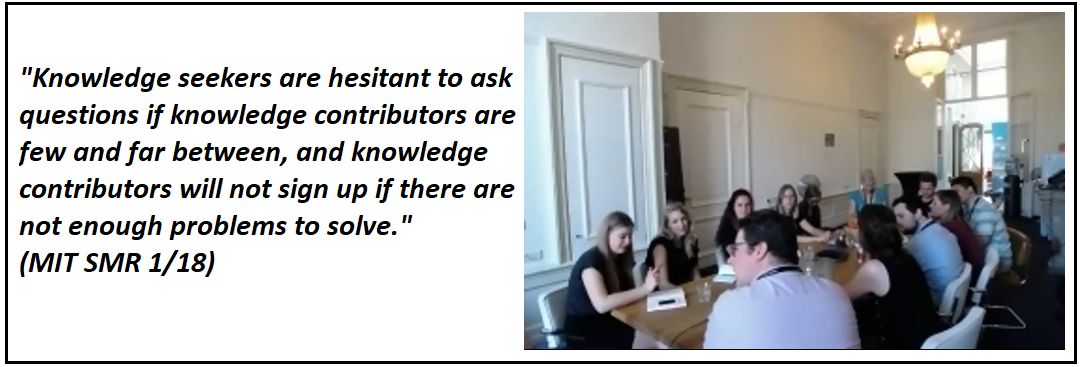This roundtable was started with two open questions to all participants:
- What pops up when you think about community engagement?
- Why is engagement important to you?
The participants had different topics in mind when it came to engagement. Some focused on interaction and replies, while others were more concerned with the helpfulness of the content and creating a welcoming environment for new users. However, when it came to the “Why” question, everyone seemed to agree: Engagement is at the heart of the community. Without it, visitors will be much less likely to join themselves, and they will probably not find their answer as well.
Stimulating engagement
Visitors to a community are generally looking for information, and not engagement in itself. It's only at a later stage (once they e.g. have posted a question or have read more about a certain topic) that their reason to visit the community is to engage with others.
(Link to the article)
Learn what your users want to read
Some had the great idea to add a (optional!) profile field to the registration page, which simply asks "What are you looking for in the community?". This way you can analyze what the users were saying, and adjust your content strategy accordingly. Tip: Offer a pre-defined list in the profile field and not a free-text field, as this will speed up your analysis of the responses.
Equip your users with the right knowledge to engage
Even though the platform is intended to be easy-access, of course there will always be users who will not engage because they don't know how to use the community properly, or if it is "ok" to start a new topic. Take away their fear and make sure that you clearly explain how the community works, why it exists and how you expect everyone to participate in it.
Tip: Use these default "how-to use the community" topics for your own community to make sure your users know what to do! Add a link to them also to your "welcome to the community"-notification so that they will know where to look for it!
Your engagement will stimulate their engagement
It’s important that all users feel like their questions and feedback are being taken seriously. By responding to feedback, every visitor will get the feel that their feedback actually will be acknowledged. Even when you might not be able to help the user directly, it will have a positive impact on everybody who will read it. So set up clear guidelines on when to engage, especially on when to respond if Peer-to-Peer support fails. Every question should be at least get a response!
When it comes to topics other than customer service questions, engagement seems to be more difficult to achieve. The participants mention that even if you get people to talk about their favourite movies or sports, after a while these conversations dry up and people stop coming back. A solution seems to be moderation: Making sure that the moderators start new topics based on current events will trigger people to respond.
Gamification
We critically discussed if gamification is truly helping with engagement. Some think it does, while others see gamification only as a short-term solution in the beginning but doubt how much it adds to the engagement of long-term members of the community. Especially when it comes to superusers it seems that badges don’t really add value, however others make quite a contrary observation with their own superusers.
Jurgen mentioned that, while it’s tempting to set up a lot of automated messages, in his experience the user recognises these messages immediately and do not really appreciate them. Personal messages have improved the engagement of users in their community massively. And make sure to not limit yourself to super users exclusively. Other users that show activity are also worth your time so make sure to engage them on a personal level as well.
Follow what your users are talking about
Another helpful advise for moderators: Follow the topics and conversation that members are already engaging in naturally. It simply will not work to impose a discussion on a subject on your users. Of course you can experiment with different types of content, however you are best to monitor closely how many views, comments and likes it will receive.
Further reading
Aluciani even shared more interesting reads he has done on engagement, feel free to check them out here:
Building Successful Online Communities: Evidence-Based Social Design
Design to Thrive: Creating Social Networks and Online Communities that Last
Did we not cover a specific question which you wanted to learn more about? Or do you have a trick which you think others do not know about yet? Then go ahead and share it with us! 🙂




